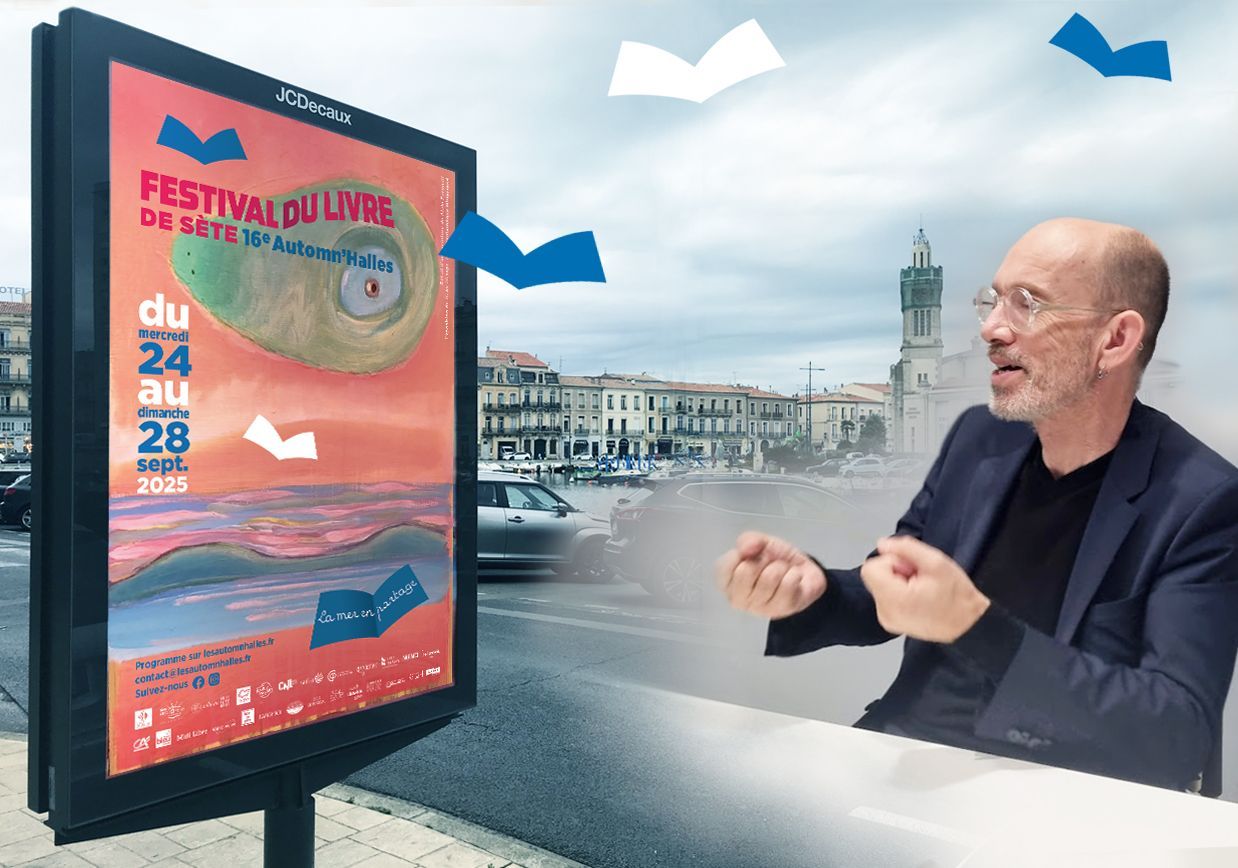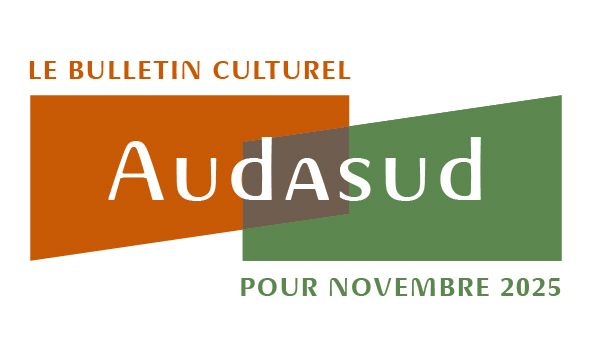Sète stretches out its sandy and rocky strip in the sun. Along one side the Big Blue, with its beaches, its theater, its Marine cemetery, and on the other, the immense lagoon of Thau and its archipelago of ponds, its graus, its canals and its long shellfish tables.
Such a setting could only serve as an abundant setting for an animal presence as rich as it is varied, and from which man has always drawn and often abused. From the sea anemone to the live fish, this venomous fish dreaded by swimmers but adored by lovers of bouillabaisse, marine animals take pride of place, in the following pages, in an inventory that is more representative than exhaustive. The history of Sète is punctuated with stories and legends of real or fantastic sea creatures, according to the imagination of the time. The coat of arms of the city, present on its facades, from the most majestic to the humblest, and even on its manhole covers, have for their coat of arms here a cetacean, there a large fish whose shape could come out of the crooked bestiary born of the imagination of a southern Jules Verne.

Left: Mr. Jules Verne collecting authentic information about the underwater world from the right sources. Title of the satirical Oran newspaper L'Algérie Comique & Pittoresque which recounted Jules Verne's visit to Algeria in two issues and devoted its cover page to him on June 15, 1884. Illustration by J. Chape representing the author of Twenty Thousand Leagues Under the Sea sitting at the bottom of the water, with the city of Oran and the hill of Santa-Cruz as the horizon.
Right: coat of arms issued in 1743 to the town of Cette, whose port was created from 1666. They represent a cetacean in front of Mount Saint-Clair, under Neptune armed with his trident.
For the navigators and fishermen who first saw it, the bumpy and elongated shape of Mount Saint-Clair must have reminded them of a cetacean stranded on the sand. Hence the names given to the place: Seta , Ceta , Cetia , etc. And This until 1928, all from the Latin cetus, itself from the Greek ketos, meaning big fish or sea monster. To this was added a perpetual joust between Sétois over the nature of the emblazoned animal, failing to reach a consensus.
An octopus could have decided between them, if it were not itself a source of discord, certainly festive and carnivalesque. Totemic animal of Sète, it thrones on the town hall square behind an escort of dolphins. The cephalopod created by the sculptor Pierre Nocca in 1987 has become, over time, the poufre or pouffre, a luscious divinity with eight tentacular arms and an inexhaustible source of inspiration for storytellers, writers, artists, cooks — at the origin of some famous recipes including the emblematic tielle — and the same researchers, who discover new cognitive faculties in it every day.
Another symbol, the marine biological station of Sète. Since its construction in 1879, it has offered a precious environment to biologists, irrefutable witnesses to the collapse of biodiversity and the impoverishment of marine ecosystems. A stone sentinel, the castle keeps one eye on the lagoon, the other on the sea.

Nicknamed the garden of the sea and classified Natura 2000, the Etang de Thau is home to an ecosystem unique in Europe. A privileged place for shellfish farming, this remarkable marine reserve lists:
• 88 species of fish including 17 rare and 40 exceptional
• 110 species of crustaceans
• 70 species of molluscs
• 1 species of endemic speckled seahorse
• 12 species of echinoderms (starfish, sea urchins, etc.)
• 18 species of coelenterates (sea anemones, jellyfish, etc.)
• 50 species of worms
• 125 species of zooplankton
• Over 100 species of protozoa
• 196 species of aquatic plants
On one side, the Etang de Thau, a vast reservoir of biodiversity, looks like a small inland sea. You just have to cycle around it – more than 60 kilometers – to appreciate its magnitude. Consisting of three bodies of water, the large pond, the White Waters pond and the creek of the Angle, it plays a fundamental role in the heart of the territory. The economic activities that it generates or with which it must coexist inevitably have an impact on its ecosystem. Limiting their harmful effects as much as possible is a collective and individual priority.
On the other side, the Mediterranean coast offers an equally worrying diagnostic for its biodiversity. The abundance of vertebrate populations there fell by 20% between 1993 and 2016, and by 52% in marine ecosystems (pelagic and coastal). If bluefin tuna populations, once in danger, have been able to recover thanks to a rigorous management plan, other species are in danger. Industrial overfishing and less nutritious plankton are killing their viability and are the most frequent threat.
Lagoons, ponds, estuaries, deltas, salt marshes, streams, canals… The wetlands of the Midi are among the ecosystems richest in animal diversity on our planet. Yet over the past 50 years, about 35% of these wetlands have been destroyed. The pressure is particularly strong on those on the coast where migratory birds stay. Subservient to shallow lagoons of brackish and salt water, they are particularly fond of salt marshes.
This privileged environment assigns us a responsibility towards vulnerable and endangered species. At all levels of actors, associations, NGOs, local and Mediterranean organizations, the objective must be to share concerns, pool and disseminate knowledge, mobilize everyone's energy in order to protect endangered species and the areas on which they depend.
One of the largest - around 5,000 ha - and the richest natural areas of the territory - 124 species of birds and reptiles, 700 plant species - the Gardiole massif, dominates the Ingril pond and the old saltworks of Frontignan . A listed and protected site since 1980, this high limestone site extends over 18 km between Montpellier and Sète and overlooks the coast and its lagoons.
Further on, linking Sète and Marseillan over 13 km by the coast, a sandy cordon has locked the Etang de Thau for four centuries. Only the grau de Pisse-Saumes (name derived from the fact that the mules, their legs in the water, satisfied a natural need by crossing it) in Marseillan plage and the canals of Sète allow the pond to chat with the sea.
On either side, the Bagnas nature reserve to the west, the Estagnol national nature reserve to the east, and the Bessilles departmental park to the north provide essential oases for biodiversity, linked together by a string of plains and protected wetlands.
50 years ago, a ministry in charge of the protection of nature and the environment was created. Shortly before, on a Sunday afternoon in December, looking jovial despite the saturated udders, a dairy cow was pacing the quay of the navy of Sète. Stimulated at the back by a not very shy cane, at the front by a barely firmer grip, it did not fail to surprise the people of Sète seated at the terraces, more accustomed to the stroll of pedestrians, Gabians and vehicles. The ruminant was simply the victim of a breakdown of the livestock truck supposed to take her to a dairy on the hill. Installed on the mountain for a long time, some were still active in the 1970s.
Another tradition that she persists, that of the cats surveying the sleepers of the Pointe courte. This singular peninsula, rebellious stronghold of the Pointus, flows into the pond without really believing it and serves as an earthly paradise for wandering felines. From early morning, they go to seek food among the landed fish, something easier than attacking the birds. The gabian, which nothing frightens, can all the more rest on its wings. It was there that Agnès Varda made her first feature film, La Pointe courte, in 1955, which was to launch the New Wave of cinema. She was, she said, fascinated by “the overwhelming light” of this “unusual neighborhood”.
You will taste there, if the baraka lives in you, the real Sète cuisine. The one that has its first roots in the oldest Mediterranean civilizations. The one which subsequently was enriched by Italian emigrants from the Gulf of Naples after the French Revolution and during the 19th century, and by the Pieds-noirs in 1962, repatriated from Algeria sometimes originating from Italy and Spain.
One species does not appear in this bestiary, the Sétoïe (pronounced Sétoye) or Sétois in Occitan. This primate mammal of the hominid family with skin tanned by sea salt and a tongue that does not know the mute e. A species in danger of rarefaction beyond exhaustion.
Jean-Renaud Cuaz


















